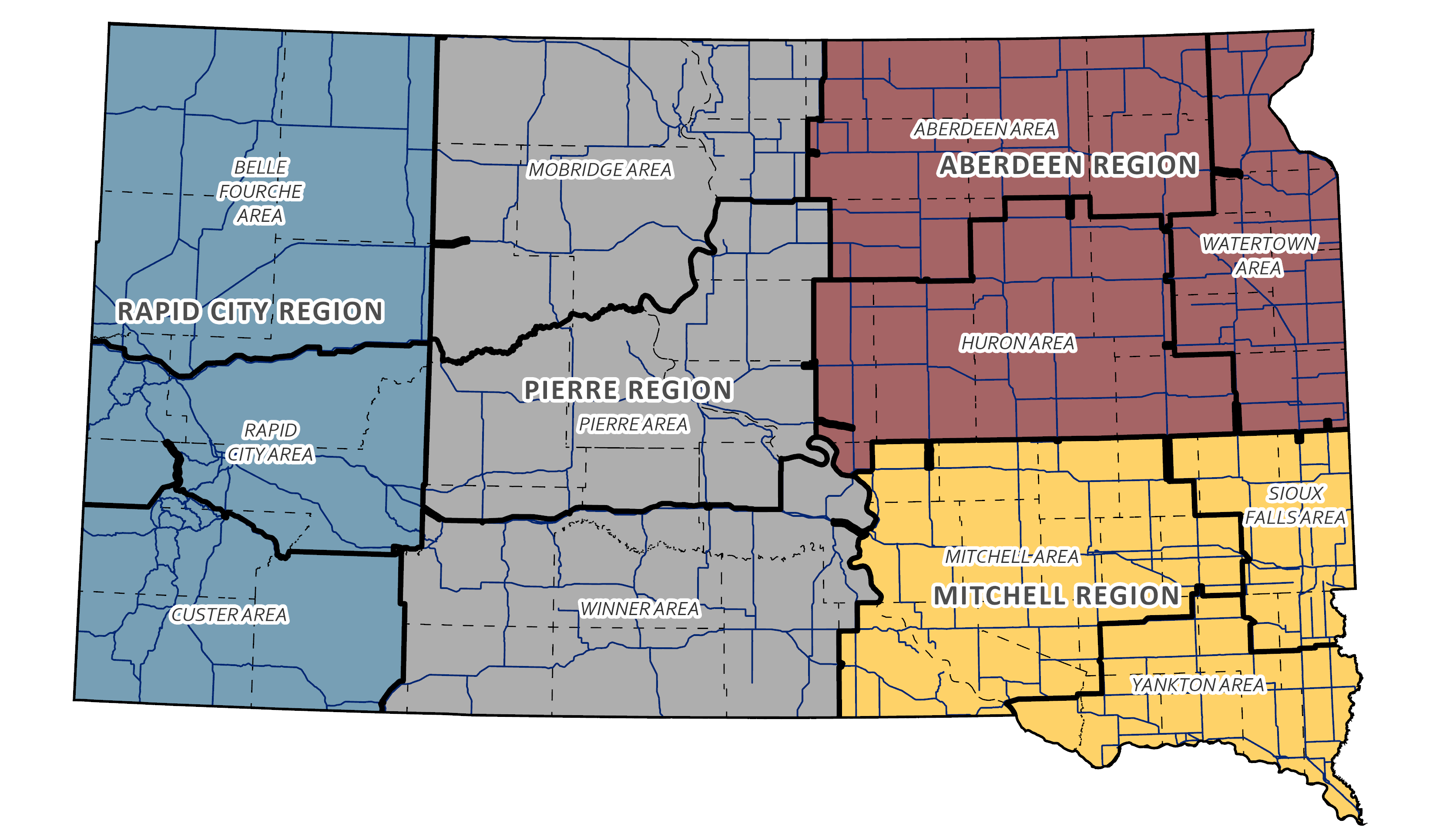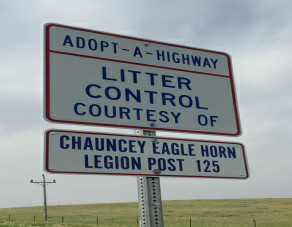Highway Safety
The Highway Safety Engineer administers the Roadway Safety Improvement Program (RSI). All safety projects are in support of the Department’s Strategic Highway Safety Plan, which has the vision that all travelers reach their destination home safely every day. This goal is accomplished when all traffic-related deaths and life-changing injuries are eliminated. The RSI Program utilizes a combination of reactive and proactive strategies to prevent these types of crashes. The Department not only works on state highways, but also alongside City, County, Tribal, and other local entities to improve the safety on all roadways in South Dakota. These projects include high-cost improvements such as shoulder widening, curve realignment, and intersection improvements and efficient low-cost projects such as signing, pavement markings, and rumble strips. When safety projects are identified on local roads, in most cases a 90/10 ratio match with federal funds paying for 90% of the project and the local entity paying 10%. A minimum of $26 million in annually allocated Federal Highway safety funds are dedicated to highway safety improvements each year, but significantly more funding is dedicated to improving highway safety each year in an effort to meet SDDOT Strategic Goals in improving highway safety.
The mission of the South Dakota Department of Transportation (SDDOT) is to efficiently provide a safe and effective public transportation system. In order to provide a safe transportation system, the SDDOT and the South Dakota Department of Public Safety, in partnership with the Federal Highway Administration (FHWA), found it necessary to update the 2014 Strategic Highway Safety Plan (SHSP). The updated plan, guided by the safety vision statement of: Eliminate ALL deaths and life-changing injuries on South Dakota roads so everyone arrives home safely, identifies various strategies intended to reduce traffic fatalities to 100 or fewer and serious injuries to 400 or fewer by 2024.
2024 STRATEGIC HIGHWAY SAFETY PLAN - CONDENSED PLAN
Centerline Rumble Stripe Facts
Every Life Counts - Partnering to Save Lives- Centerline Rumble Stripes (CLRS) are grooved patterns in the pavement placed on centerline that provide both an audible warning and a physical vibration to alert drivers that they are leaving the driving lane.
- CLRS are a proven low cost safety improvement to reduce target crash types. Target crashes for CLRS are head-on, sideswipe opposing, and run-off-road left - statewide there were 352 (30% of state's total) fatal and serious injury crashes of these types on rural 2-lane roads between 2010 and 2014.
- The South Dakota Strategic Highway Safety Plan identifies CLRS as a priority safety strategy for reducing head-on vehicle collision with a 60% reduction of this crash type.
- SDDOT implemented CLRS guidelines in 2016 to reduce lane departure crashes systematically and proactively.
- The guidelines recommend that CLRS be placed on rural, undivided roadways with daily traffic greater than 2,500 vehicles.
- Lane Departure crashes occur on all types of roadways; however, there are some common factors that were used to determine roads covered in the guidelines:
- Driver related - Young drivers, fatigued and drowsy drivers, distracted driving, and higher speeds.
- Road and environmental related - Two lane, undivided roads; rural, high speed roads; high traffic volumes; horizontal and vertical curves.
To learn more about CLRS in South Dakota:
Centerline Rumble Stripe Fact Sheet
These interchanges have been shown to increase capacity and safety, decrease congestion and minimize the cost of new infrastructure.
Benefits & Advantages:
- Safety – Reduces the number of ways vehicles can collide by almost half (14 compared to 26 for a conventional diamond interchange).
- Greater capacity and efficiency – Accommodates more traffic than conventional designs. Drivers make free-flow right and left turns on to the major freeway.
- Easy navigation – Guides drivers with overhead signs, pavement marking, and traffic signals.
- Meets the needs of all road users – Accommodates large trucks, pedestrians and bicyclists.
Navigating A DDI:
- Drivers follow the signs, signals and pavement markings to cross through the intersection at the first set of traffic lights. Traffic appears as if on a one-way street.
- All left turns onto the freeway are free flow, meaning vehicles do not have to stop to access the ramp.
- Vehicles going straight simply proceed through a second set of traffic lights.
- Pedestrians travel on designated walkways and cross only at the crosswalks.
- Bicyclists may choose to use the bike lane or pedestrian walkways and crosswalks.
Cost-Effectiveness:
- For improvement projects, a Diverging Diamond interchange often uses the existing bridge structure and the existing right of way, which eliminates the cost of building new structures and purchasing additional right of way.
- Because many of the existing interchange features remain intact, the Diverging Diamond interchange is often built in less time than it would take to build a new interchange and with significantly less impact to motorists.
- A Diverging Diamond interchange usually requires the purchase of less right of way and the construction of fewer lanes and bridge structures than traditional interchange types.
Contact
© 2025 State of South Dakota. All Rights Reserved.
Becker-Hansen Building
700 E. Broadway Ave.
Pierre, SD 57501
Modern Logic
Region & Area Offices
Travelers
© 2025 State of South Dakota. All Rights Reserved.
Becker-Hansen Building
700 E. Broadway Ave.
Pierre, SD 57501
Modern Logic




